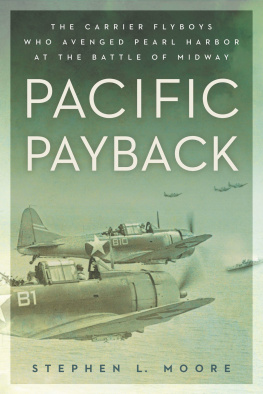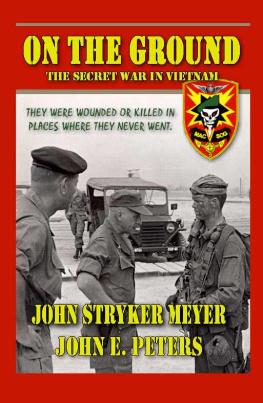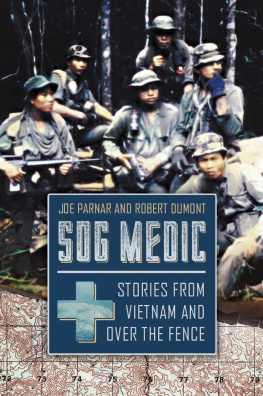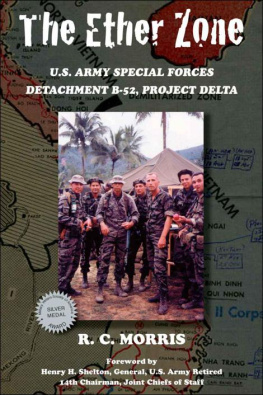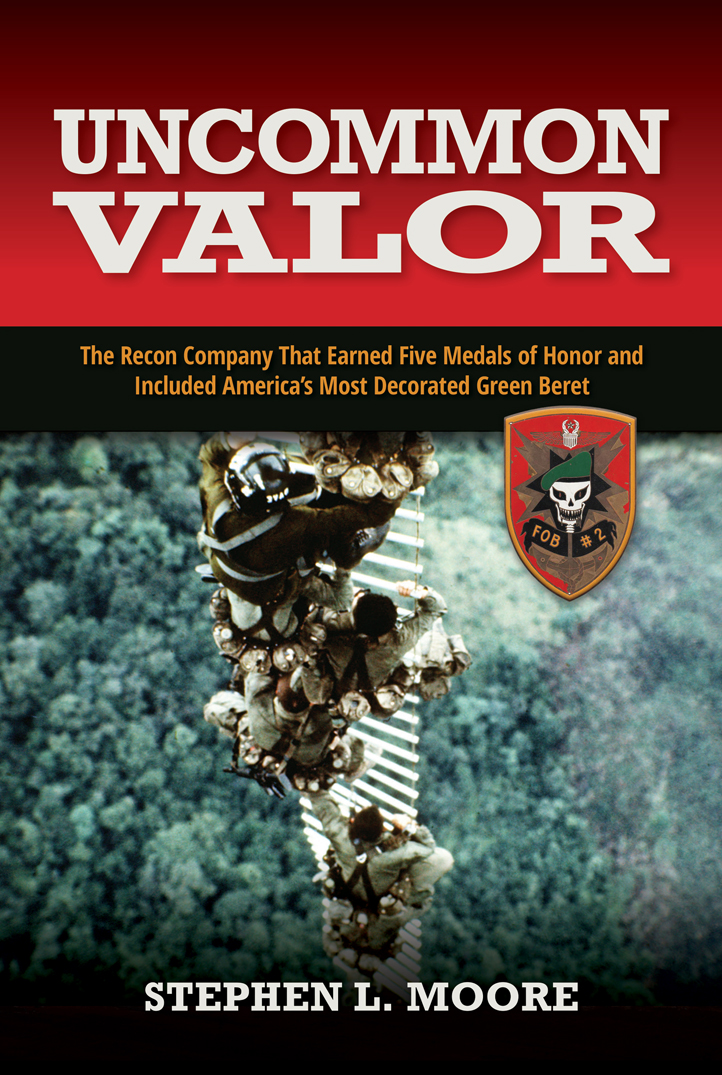Table of Contents
Guide


Naval Institute Press
291 Wood Road
Annapolis, MD 21402
2018 by Stephen L. Moore
All rights reserved. No part of this book may be reproduced or utilized in any form or by any means, electronic or mechanical, including photocopying and recording, or by any information storage and retrieval system, without permission in writing from the publisher.
Library of Congress Cataloging-in-Publication Data is available.
978-1-68247-312-2 (eBook)

 Print editions meet the requirements of ANSI/NISO z39.48-1992 (Permanence of Paper).
Print editions meet the requirements of ANSI/NISO z39.48-1992 (Permanence of Paper).
26 25 24 23 22 21 20 19 18 9 8 7 6 5 4 3 2 1
First printing

CONTENTS
AREA OF KEY SOG OPERATIONS

Map artwork courtesy of Joe Parnar

S ergeant First Class Bob Howard lay unconscious as hellacious volumes of semi- and full-automatic weapons fire made confetti of the dense green jungle foliage all around his crumpled body.
It was December 30, 1968, and Howards thirty-three-man recon platoon was being shredded by two companies of North Vietnamese infantrymen. Near him lay his platoon commander, a young first lieutenant whose body had been ripped by bullets and grenade fragments. Four South Vietnamese members of Howards platoon had also been cut downone was already dead and the other three were writhing in agony.
Howard was raised in near-poverty by his grandmother in Opelika, Alabama; he was now a specimen of physical fitnessa powerfully built six-footer with a square jaw and a fierce sense of patriotism. A quiet, unassuming character, he was considered the epitome of bravery in combat. He had already been written up for the Medal of Honor twice, only to have the citations downgraded to a Distinguished Service Cross and a Silver Star.
But now the fierce warrior was in agony, with shrapnel wounds to his hands, groin, and lower legs. Blown backward by the force of a grenade, Howard fought to regain consciousness and struggled to see through the blood gushing from an ugly head wound. As his senses slowly returned, he detected the most vile stenchthe scent of burning human flesh. He pulled himself upright and spotted a North Vietnamese soldier brandishing a flamethrower. The enemy infantryman was moving about the kill zone, roasting the bodies of Howards wounded platoonmates with liquid fire.
The grisly massacre was playing out in Cambodia, far from any friendly troops in an area where the American government denied having any military presence. Bob Howard knew there would be no cavalry racing to his rescue. Most of the Green Berets web gear had been ripped away and his automatic weapon was useless, blown all to hell by the enemy grenade. To the left of the soldier with the flamethrower, Howard spied his gravely wounded lieutenant screaming in agony. He fumbled to retrieve an M33 hand grenade strapped to his left side and struggled to remove the pin with fingers that had been slashed by red-hot shrapnel.
As he did so, the North Vietnamese Army (NVA) soldier spotted him and turned his flamethrower in Howards direction. In the midst of rising smoke, rattling gunfire, and the screams of dying men, Howard and his opponent made direct eye contact. The American felt his enemy was experiencing a smug sense of satisfaction knowing he was about to burn a Green Beret to death.
Howard gripped his hand grenade as final thoughts rushed through his head: Im about to be burnt up or blown up, but Im at least going to take this guy out with me.

Sergeant Howard was stationed at Special Forces Forward Operating Base No. 2 (FOB-2), which was established in May 1966 near Kontum in the Central Highlands region of South Vietnam. This advanced base served as the operations center for a recon company of an elite U.S. military unit that fell under the auspices of the Military Assistance Command, Vietnam (MACV). The unit, code-named the Studies and Observations Group (SOG), was composed strictly of volunteersArmy Green Berets, a handful of Navy SEALs (Sea, Air, and Land), Central Intelligence Agency (CIA) field agents, and indigenous personnel.
SOG reported directly to the Joint Chiefs of Staff (JCS) and the White House, running black ops (top secret operations)so classified that the very existence of the covert unit was denied by the U.S. government. SOG men took on the most dangerous assignments, working behind enemy lines to penetrate NVA facilities in Cambodia, Laos, and South Vietnam along the heavily defended Ho Chi Minh Trail. MACV organized SOG in 1964 to conduct strategic reconnaissance missions, capture enemy soldiers for intelligence, identify targets for bombing missions, conduct psychological missions (such as sabotaging enemy ammunition), and even to attempt the rescue of American prisoners of war (POW). SOGs recon men were also responsible for saving the lives of downed pilots during so-called Bright Light missions conducted deep behind enemy lines.
SOGs Green Berets operated in small recon teams of generally two or three Americans with three or more indigenous soldiers. The SOG teams were often inserted behind enemy lines by helicopter, with the American soldiers decked out in sterile uniforms (stripped of insignia) and carrying foreign weapons. If killed or captured, their existence in their area of operations (AO) would be denied by the U.S. government. In 1969, MACV-SOG documented its ratio of NVA soldiers killed to each lost Green Beret at 150 to 1the highest documented kill ratio of any American unit in the war.
In many cases, the SOG teams went in under enemy fire and were pursued by NVA trackers from the moment they inserted into the jungle. They remained on the ground for days or even more than a week at a time with meager rations and only the ammunition each man could carry, often engaging platoon- to division-sized enemy forces until the surviving members could be extracted by helicopter. Sometimes entire teams were wiped out.
According to Major John Plaster, author of the first detailed history of SOG, the recon company at FOB-2 Kontum was the Vietnam Wars most highly decorated unit, with five Medal of Honor (MOH) recipients. These five sky blue ribbons were awarded between February 1967 and January 1970. Within that same stretch, FOB-2 recon men also received eight Distinguished Service Crosses (DSC)the nations second-highest award for valorand innumerable other awards. Purple Hearts were awarded by the unit at a pace unparalleled in American wars of the twentieth century, with team casualties sometimes reaching 100 percent. Oftentimes, Special Forces (SF) troopers declined the submission of paperwork for a Purple Heart or simply did not report minor shrapnel woundsas far as they were concerned, it was all in a days work.
Next page

